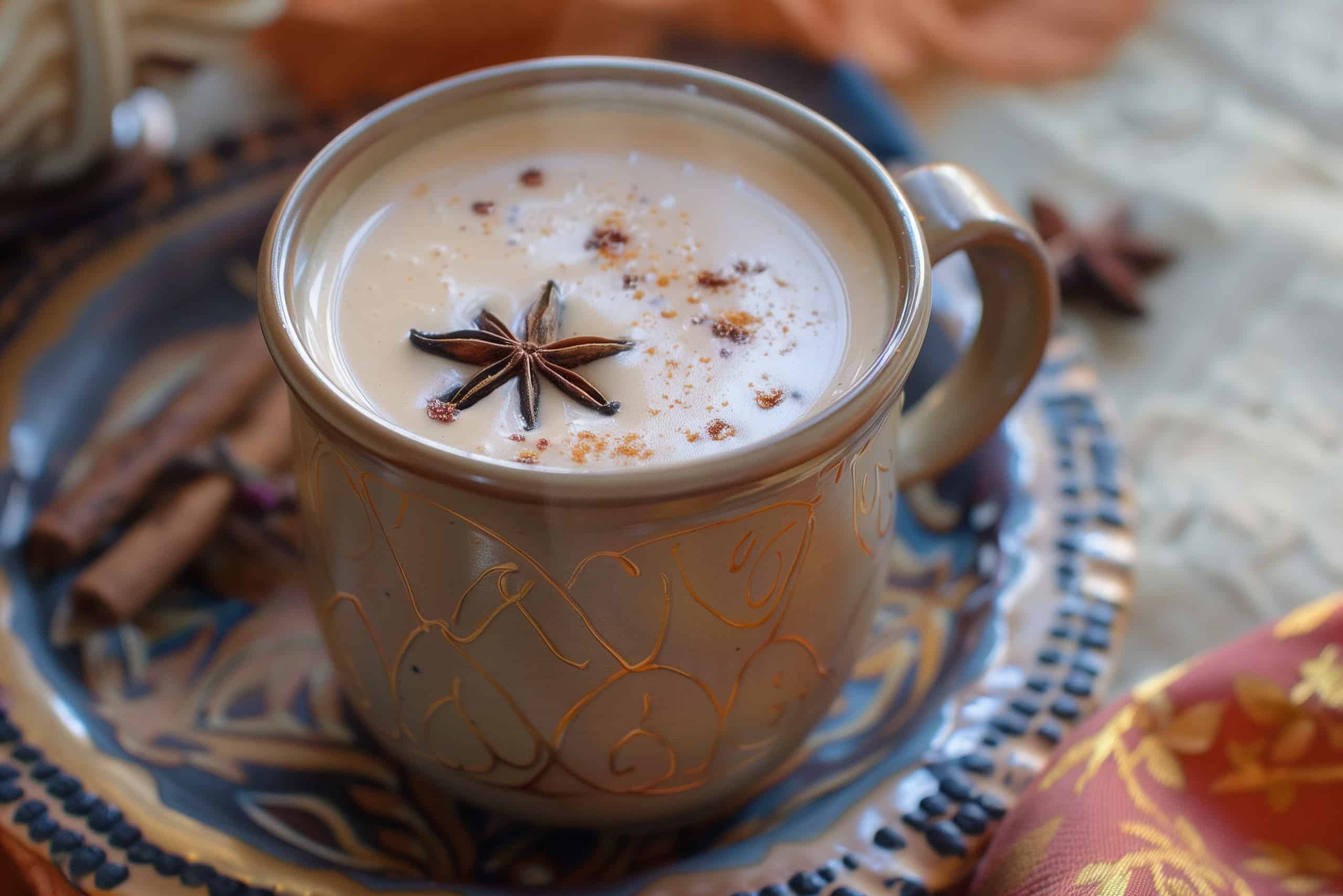Karak tea is an undeniable favorite across the Arabian Gulf, capturing the hearts of tea lovers who now seek out its rich, spiced flavor in local cafes and homes.
However, this beloved drink, which initially arrived from the Gulf countries like Saudi Arabia and Yemen, has also recently gained popularity in Egypt with brands like Misr Cafe creating instant karak tea sachets and multiple new karak tea shops opening up in Cairo. But while its popularity surged in the Gulf, the origins of Karak tea stretch much further back to the Indian subcontinent, where the roots of this spiced brew truly began.
What are its origins?
Though Karak tea is now deeply associated with the Gulf, its true origins trace back to India, where it is known as “masala chai.” This traditional Indian drink blends strong black tea and condensed milk with a variety of spices, including cardamom, ginger, cinnamon, and sometimes cloves or black pepper. Sweetened with sugar, masala chai was initially brewed as a medicinal concoction intended to promote health and energy. Over time, the drink evolved into a popular daily beverage for many across India and the surrounding regions.
In the early 20th century, as trade routes and migrations expanded, masala chai made its way across the subcontinent and beyond. South Asian workers, particularly from India and Pakistan, began migrating to the Arabian Gulf region during the economic boom of the 1960s. This migration brought with it various cultural and culinary traditions, including masala chai. In the Gulf, the tea adapted to local tastes, becoming even sweeter and creamier, and it became known as “karak”, a term that roughly translates to “strong” in Hindi, reflecting the rich and bold flavor of the tea.
By the 1970s and 1980s, Karak tea had become entrenched in the daily lives of people in Gulf countries like Qatar, Saudi Arabia, and the United Arab Emirates (UAE). The tea’s popularity soared due to its ability to provide comfort and warmth, especially during the region’s cooler months. Vendors began serving the tea in small roadside stalls, often brewed in large pots and sold in Styrofoam cups, making it easily accessible to people across all walks of life. In the UAE, for example, Karak chai became synonymous with the nation’s tea culture, blending the traditions of South Asia with local preferences. It became an essential drink for social gatherings, and to this day, it is a beloved daily ritual in many Gulf countries.
En route to Egypt
Karak tea’s journey from the Gulf to Egypt is a more recent phenomenon. In the past decade, the drink began to gain a following in Egypt, largely due to the influence of neighboring Gulf nations. Egyptians, who have long had a deep affinity for strong and sweet tea, found Karak’s unique blend of spices and creaminess an appealing twist on their traditional tea preferences. The introduction of specialty cafes, like Karak Boy, has contributed to the tea’s rise in popularity. These cafes, which serve authentic Karak tea, cater to a younger generation that is eager to embrace new, global flavors while still honoring local drinking traditions.
As Karak tea becomes more widely available, it has become a part of Egypt’s evolving tea culture, symbolizing the blending of local and global influences. Cafes and even home kitchens are now serving this spiced tea, reflecting Egypt’s growing love for international culinary trends while maintaining a deep connection to the region’s tea culture.
From its roots in the Indian subcontinent to its journey through the Gulf and ultimately to Egypt, Karak tea’s rise reflects the blending of cultures and the adaptability of a beloved beverage. In Egypt, it has successfully captured the hearts of tea enthusiasts, offering a new twist on a time-honored tradition. As this spicy, creamy drink continues to grow in popularity, Karak tea is likely to become an integral part of Egypt’s vibrant and diverse tea culture.



Comments (0)